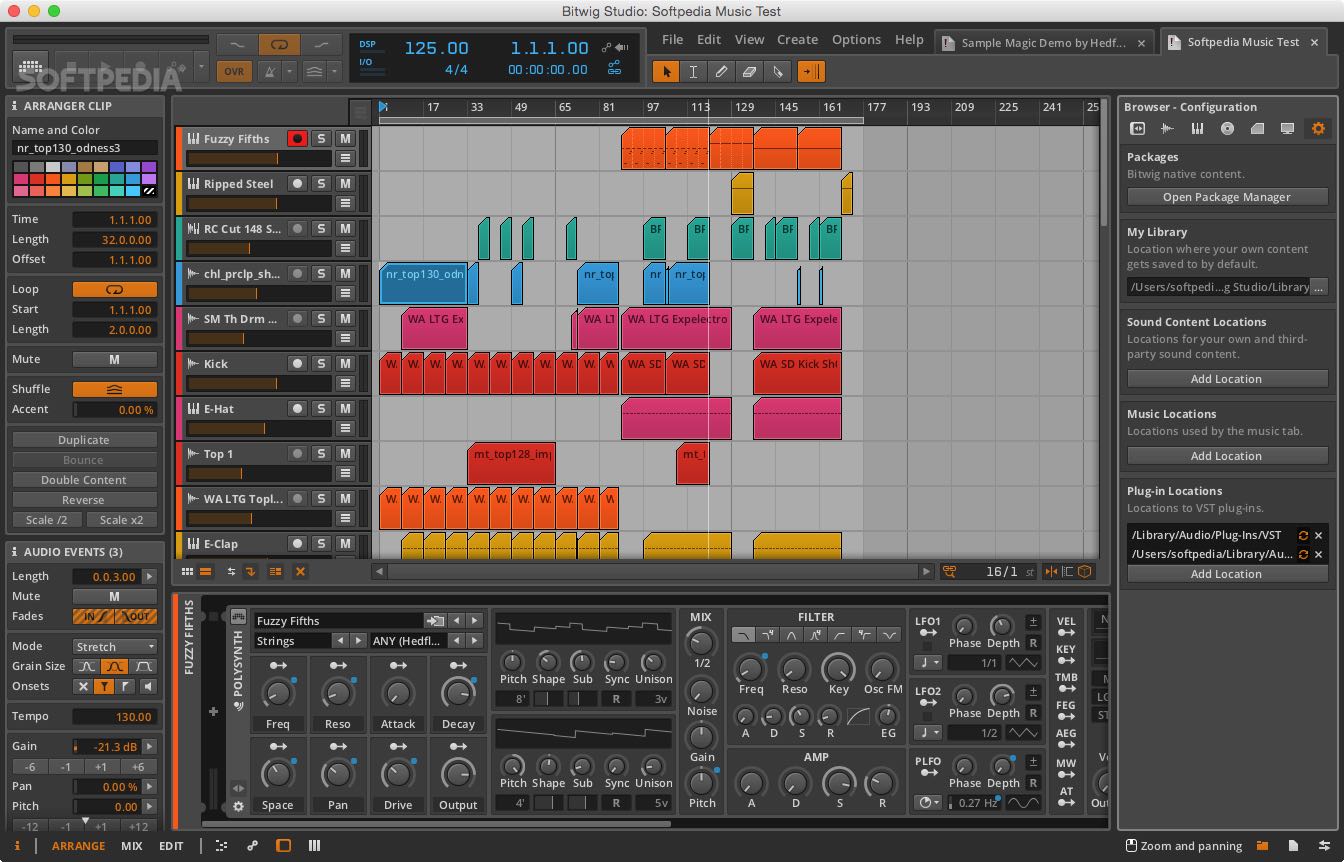

Linux: When recording from a monitor source in PipeWire don't apply the device output latency for the recording latencyĬhanges in Bitwig Studio 4.3.1 Fixes.Linux: Sometimes a stuck buffer could exist when using PipeWire.VST3: crash with plugins using track info, on tracks with very long name.Better names in sampler device when it is using multisamples.
#Bitwig studio 3 windows#
Plug-in windows could behave weirdly when using menus in a plug-in on KDE (regression).Engine sometimes crashed when using PipeWire on Linux (regression).Categories for impulse responses in browser were not correct and shown as "Invalid" (regression).Controller script added for ESI Xjam Performance Controller.For installing the DEB file, Ubuntu 20.04 or later.Ĭhanges in Bitwig Studio 4.3.2 New Features Linux - For installing the Flatpack file, any modern distribution with Flatpak installed (more information here).Windows - Windows 7, 8, 10, or 11 (all in 64-bit).With a dedicated category of phase modules, Bitwig has made these concepts freshly accessible and newly relevant for modern music production.īitwig Studio 3 will be previewed at NAMM and it is expected to release in Q2 2019.Bitwig Studio 4.3 is out now, featuring Convolution, Delay+, and some analog flavor for Polymer and The Grid. These clickable icons appear beside in ports, allowing common connections to be made wirelessly.Īfter pitch, timbre, and loudness, phase is the essential element of sound, capable of driving basic time functions, complex modulation synthesis, and so much more. And for signals that are needed regularly, there is the option of pre-cords. With The Grid’s quick workflow gestures, new modules can be dropped directly onto ports, automatically wiring them into your patch. And plenty of modules can Stereo-ize signals, adding variety where needed. That includes control signals, which indirectly affect audio. All signals are interchangeable so any out port can be connected to any in port. In The Grid, all signals are created equal and 4x-oversampled for the highest sound quality. With dedicated grid modules for sending any control, trigger, or pitch signal as CV Out and receiving any CV In, hardware can be seamlessly integrated with The Grid.And just as Bitwig Studio’s modulators can control any parameter in The Grid, any grid signal can be used to modulate child devices. Grid modules like envelopes, LFOs, and sequencers all have modulator outputs as well.Arranger or clip-based automation can be added for any parameter in grid patches, even in combination with Bitwig Studio’s existing modulators.
#Bitwig studio 3 Patch#

Need an adaptive audio effect with your signature sound? FX Grid will chew up incoming audio, either gently or otherwise. Want to build a polyphonic synth? Start with Poly Grid. While all Grid devices work in the same way, each allows for different configurations. The Grid is an open modular environment built in to three new devices: Poly Grid, Mono Grid and FX Grid.

As was hinted at from the start, Bitwig Studio was always intended to provide a fully-modular sound design option, and this has become reality with The Grid.


 0 kommentar(er)
0 kommentar(er)
